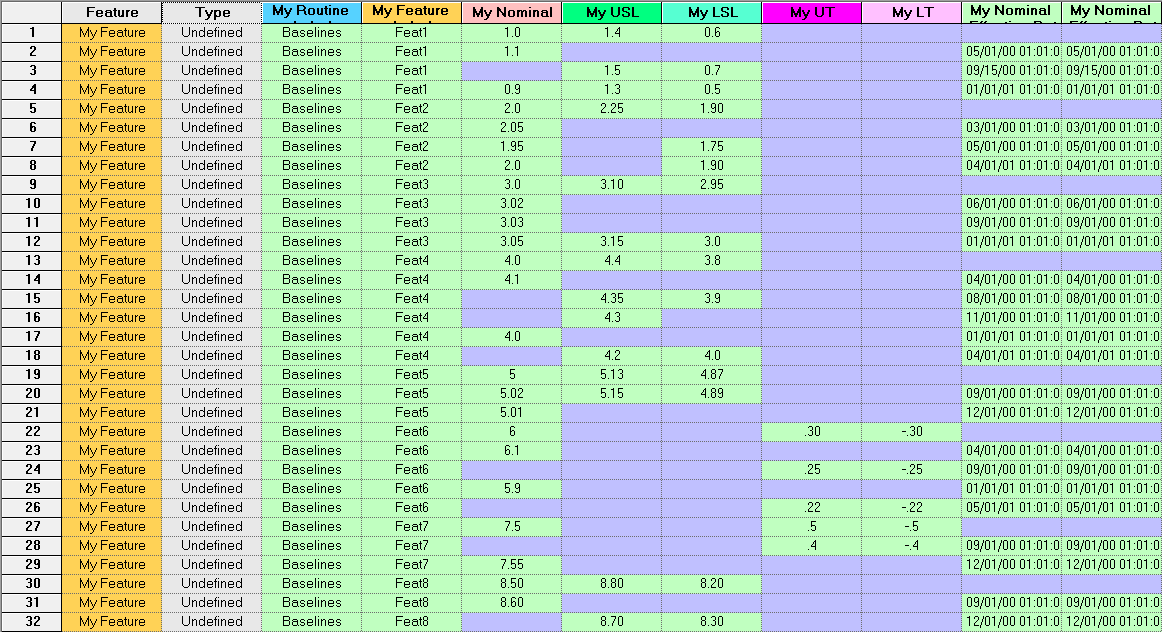Introduction
DataSmith concepts demonstrated:
Accumulated Features
Effective dates
Comments
To complete this tutorial:
Download the data file here. Save the zip file and extract the files.
Run DataSmith.
Create a new translator file.
Follow steps 1-6 below.
When you are finished, compare your result with the screen shots shown in the Review section at the end of this topic.
Step 1 - Get Started
Create a new Config.
Modify the Config properties.
Change the Label to "ProChan Noms".
Enter the text ”nom” into the Extensions field.
Turn on the Insert Header check box in the Preprocess section.
Leave all other options with the default settings.
Click OK.
Save the translator file as "ProChan Nominals Tutorial.4Datasmith". Save periodically from this point onward to avoid losing your progress as you make changes to the translator.
Select
“Add Files” from the “File” menu or click ( ) on the
toolbar.
) on the
toolbar.
Select and open the file ProChan.nom.
Step 2 - Define the Header
Locate the Instructions node under the Header node.
Define the instructions as:

The file should now look like this:
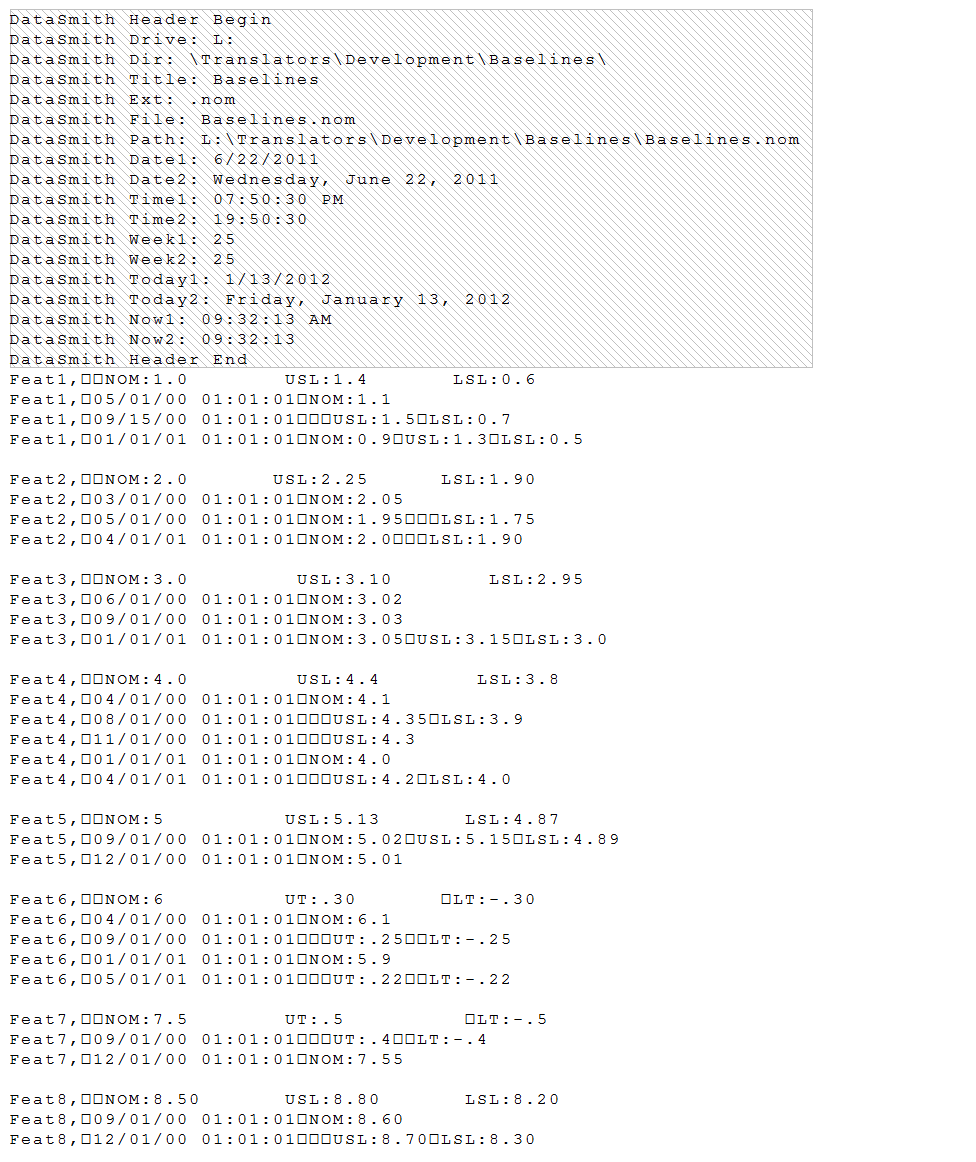
Step 3 - Define a Feature
Locate the node labeled “Feature A” under the Features node.
Double-click "Feature A".
In the Feature Properties dialog:
Change the feature label to “My Feature”.
Change the color if desired.
Click Ok.
Locate the Instructions node under "My Feature".
Define the instructions as:

The file should now look like this:
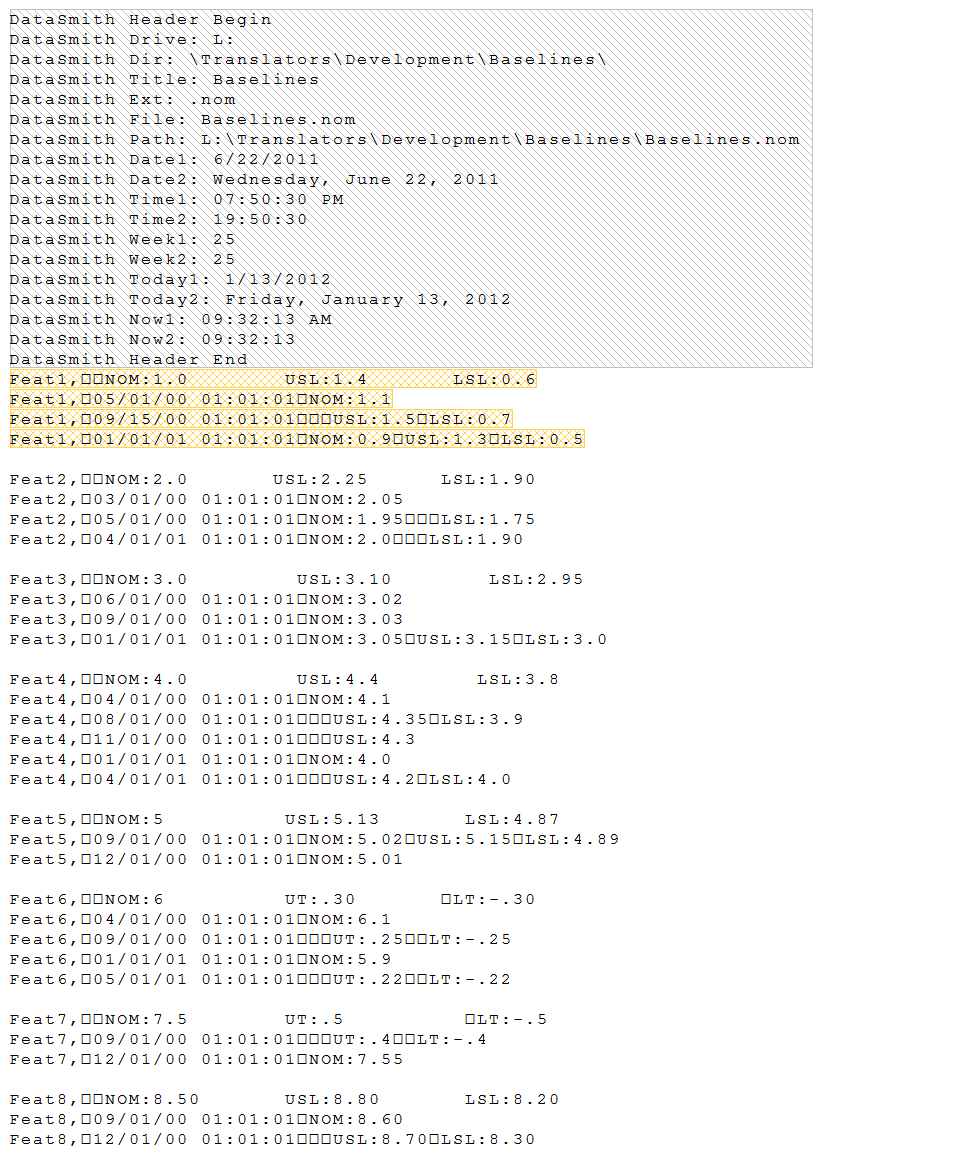
Step 4 - Define a Comment
Locate the node labeled “Comment A” under the Comments node
Double-click "Comment A".
In the Comment Properties dialog:
Change the comment label to “Blank Line”
Click Ok.
Locate the Instructions node under "Blank Line".
Define the instructions as:

The file should now look like this:
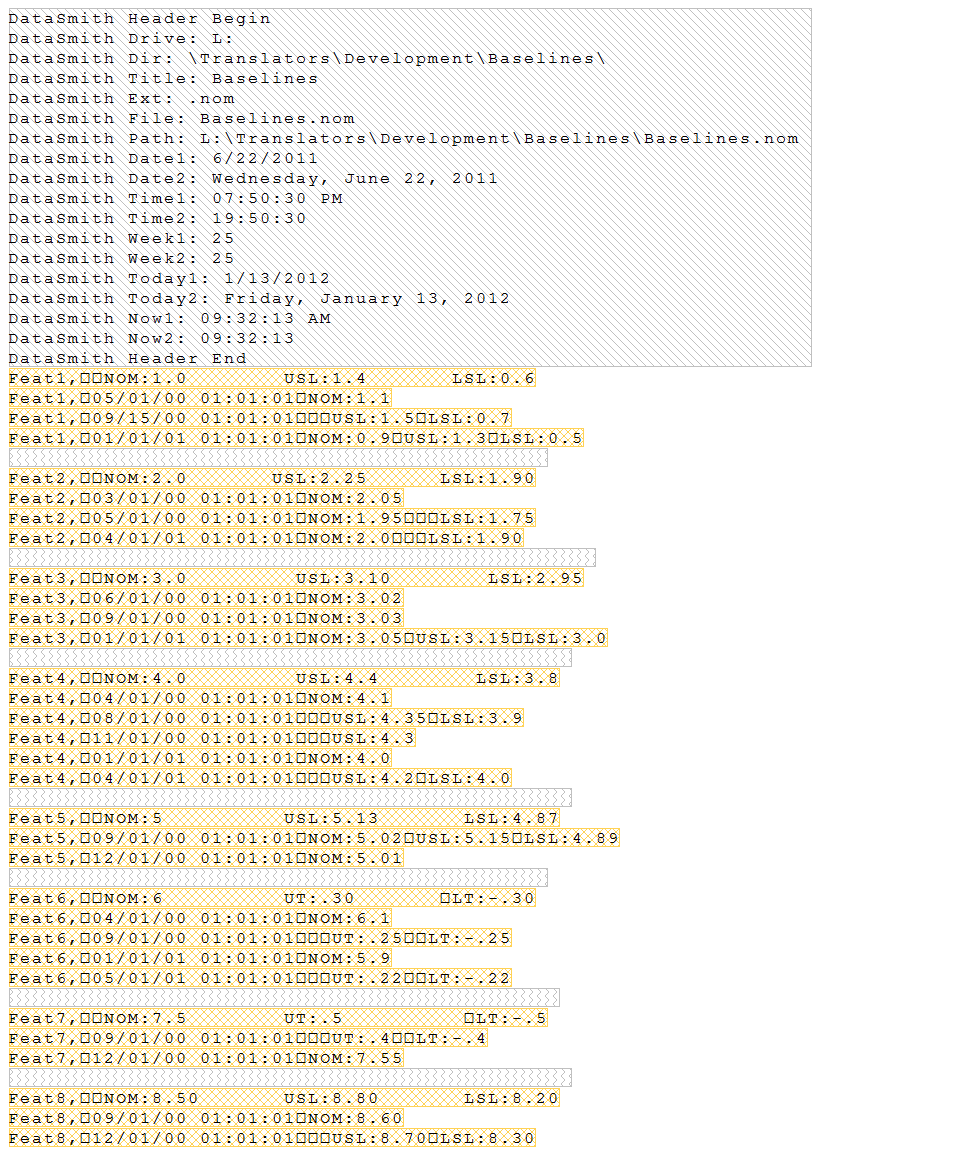
Step 5 - Define Header Characteristics
Routine Label
Locate the Characteristics node under the Header node.
Right-click on the Characteristics node
Select New Characteristic from the context menu.
Locate the node labeled “Characteristic A” under the Characteristics node.
Double-click "Characteristic A".
In the Characteristic Properties dialog:
Change the label to “My Routine Label”.
Change the color if desired.
Click Associate.
Select the association Routine>Properties>Label.
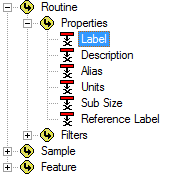
Click Ok.
Click Ok.
Locate the Instructions node under "My Routine Label".
Define the instructions as:
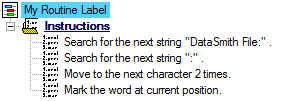
The file should now look like this:
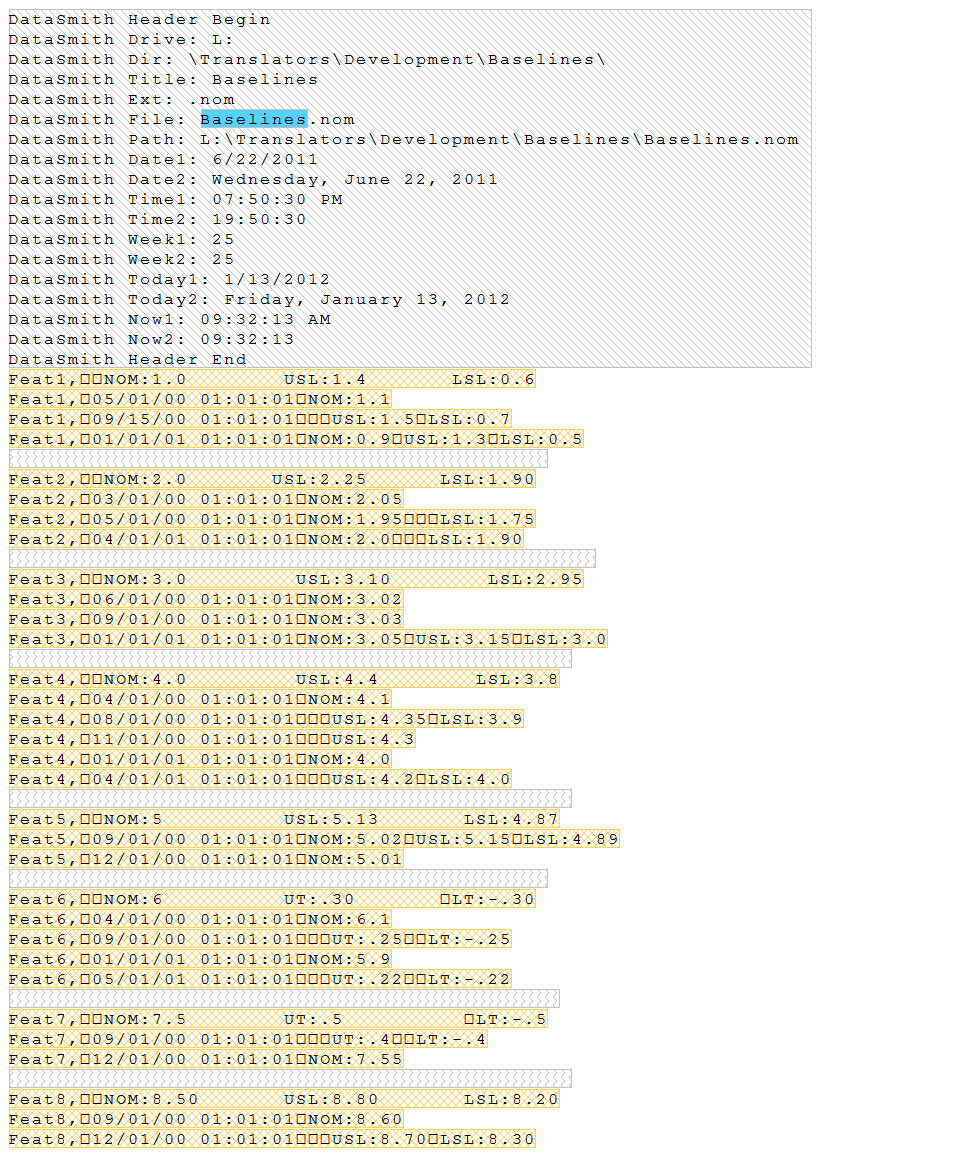
Step 6 - Define Feature Characteristics
Feature Label
Locate the Characteristics node under the “My Feature” node.
Right-click on the Characteristics node.
Select New Characteristic from the context menu.
Locate the node labeled “Characteristic A” under the Characteristics node.
Double-click “Characteristic A”.
In the Characteristic Properties dialog:
Change the characteristic label to “My Feature Label”.
Change the color if desired.
Click Associate.
Select the association Feature>Properties>Label.
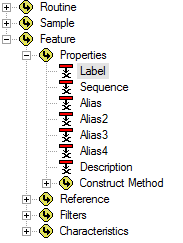
Click Ok.
Click Ok.
Locate the Instructions node under "My Feature Label".
Define the feature instructions as:

Nominal
Locate the Characteristics node under the “My Feature” node.
Right-click on the Characteristics node.
Select New Characteristic from the context menu.
Locate the node labeled “Characteristic A” under the Characteristics node.
Double-click “Characteristic A”.
In the Characteristic Properties dialog:
Change the characteristic label to “My Nominal”.
Change the color if desired.
Click Associate.
Select the association Feature>Characteristics>Position>Nominal.
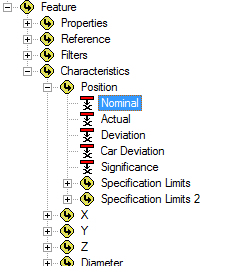
Click OK.
From the Type Validation dropdown, select Real (decimal value).
Click Ok.
Locate the Instructions node under "My Nominal".
Define the feature instructions as:

USL (Upper Specification Limit)
Locate the Characteristics node under the “My Feature” node.
Right-click on the Characteristics node.
Select New Characteristic from the context menu.
Locate the node labeled “Characteristic A” under the Characteristics node.
Double-click “Characteristic A”.
In the Characteristic Properties dialog:
Change the characteristic label to “My USL”.
Change the color if desired.
Click Associate.
Select the association Feature>Characteristics>Position>Specification Limits>Absolute>Bilateral>Upper.
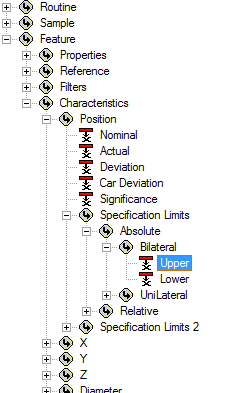
Click Ok.
From the Type Validation dropdown, select Real (decimal value).
Click Ok.
Locate the Instructions node under "My USL".
Define the feature instructions as:

LSL (Lower Specification Limit)
Locate the node “My USL” that was created in the previous step.
Right-click “My USL”.
Select Duplicate Characteristic from the context menu.
Double-click "My USL (1)".
In the Characteristic Properties dialog:
Change the label from “My USL (1)” to “My LSL”
Change the color if desired.
Click Associate.
Change the association from Upper to Lower.
Click Ok.
Click Ok.
Locate the Instructions node under "My LSL".
Change the Search instruction string from “USL:” to “LSL:”
UT (Upper Tolerance)
Locate the “My LSL” node that was created in the previous step.
Right-click “My LSL”.
Select Duplicate Characteristic from the context menu.
Double-click "My LSL (1)".
In the Characteristic Properties dialog:
Change the label from “My LSL (1)” to “My UT”.
Change the color (optional).
Click Associate.
Change the association to Feature>Characteristics>Position>Specification Limits>Relative>Bilateral>Upper.
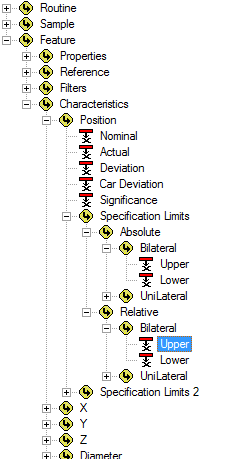
Click Ok.
Click Ok.
Locate the Instructions node under "My UT".
Change the search instruction string from “LSL:” to “UT:”.
LT (Lower Tolerance)
Locate the “My UT” node that was created in the previous step.
Right-click “My UT”.
Select Duplicate Characteristic from the context menu.
Double-click "My UT (1)".
In the Characteristic Properties dialog:
Change the label from “My UT (1)” to “My LT”.
Change the color if desired.
Click Associate.
Change the association from Upper to Lower.
Click Ok.
Click Ok.
Locate the Instructions node under "My LT".
Change the search instruction string from “UT:” to “LT:”.
Nominal Effective Date
Locate the Characteristics node under the "My Feature" node.
Right-click “Characteristic A”.
Select New Characteristic from the context menu.
Double-click "Characteristic A".
In the Characteristic Properties dialog:
Change the characteristic label to “My Nominal Effective Date”.
Change the color if desired.
Click Associate.
Select the association to Feature>Characteristics>Position>Nominal Effective>Date and Time.
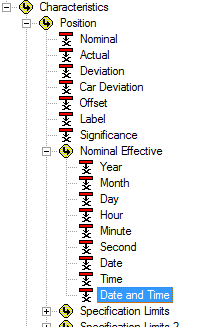
Click Ok.
From the Type Validation dropdown, select DateTime (date and time).
Click Ok.
Locate the Instructions node under "My Nominal Effective Date".
Right-click Instructions and select New Instruction.
Define the feature instructions as:
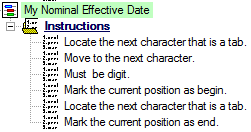
Limit Effective Date
Locate the node “My Nominal Effective Date” that was created in the previous step.
Right-click “My Nominal Effective Date”.
Select Duplicate Characteristic from the context menu.
Double-click "My Nominal Effective Date (1)".
In the Characteristic Properties dialog:
Change the label from “My Nominal Effective Date (1)” to “My Limit Effective Date”
Change the color if desired.
Click Associate.
Change the association to Feature>Characteristics>Position>Specification Limits>Limit Effective>Date and Time.
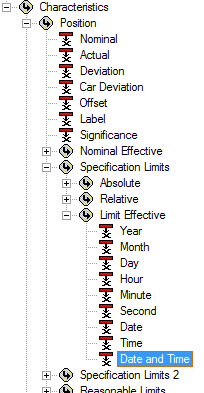
Click Ok.
Click Ok.
Review Results
Below are screen captures of what the file highlighting and the grid in DataSmith will look like once all of the steps have been completed. Compare the screen captures to your finished results to confirm that all of the steps were completed successfully.
The file should now look like this:
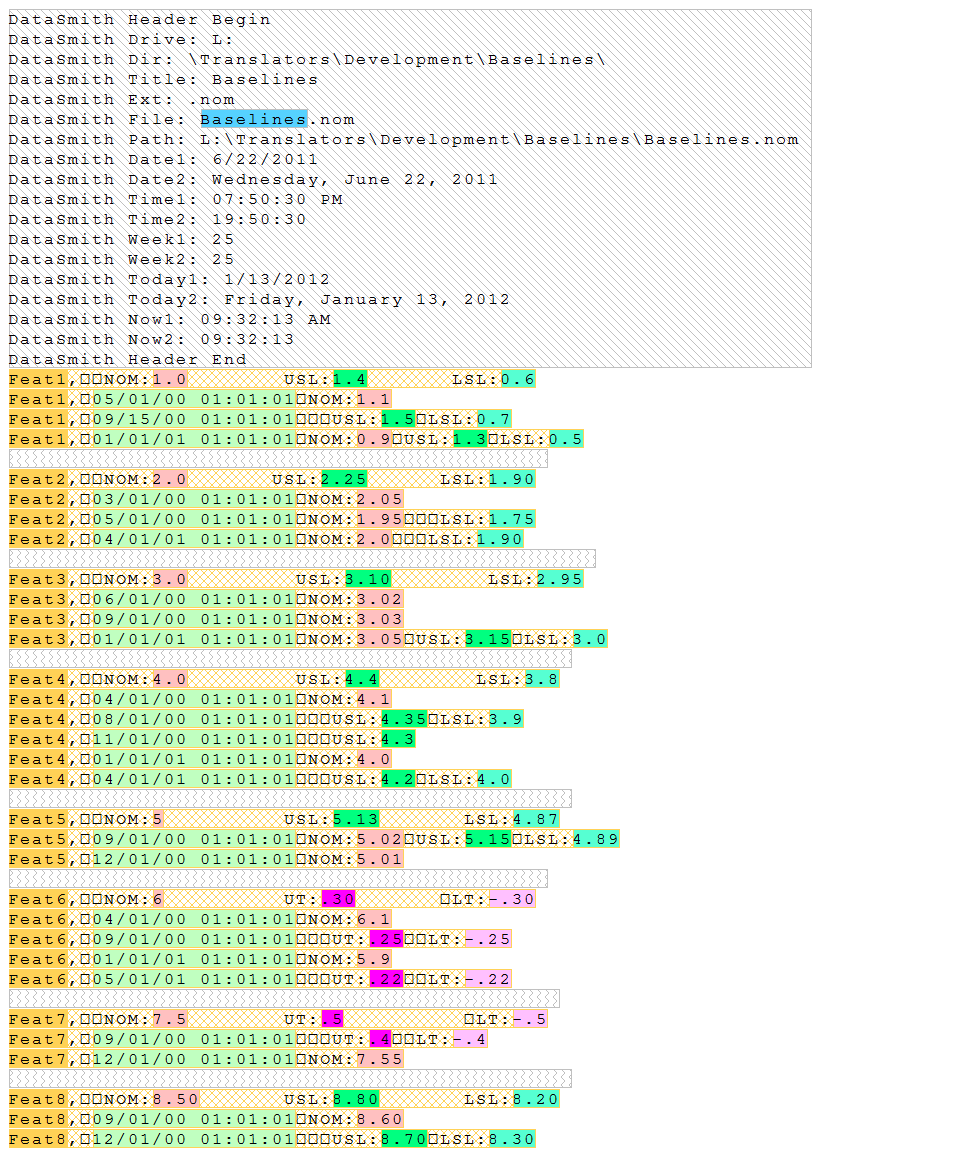
Switch the main window from the Baselines.nom tab to the Grid tab. The grid should look like this:
